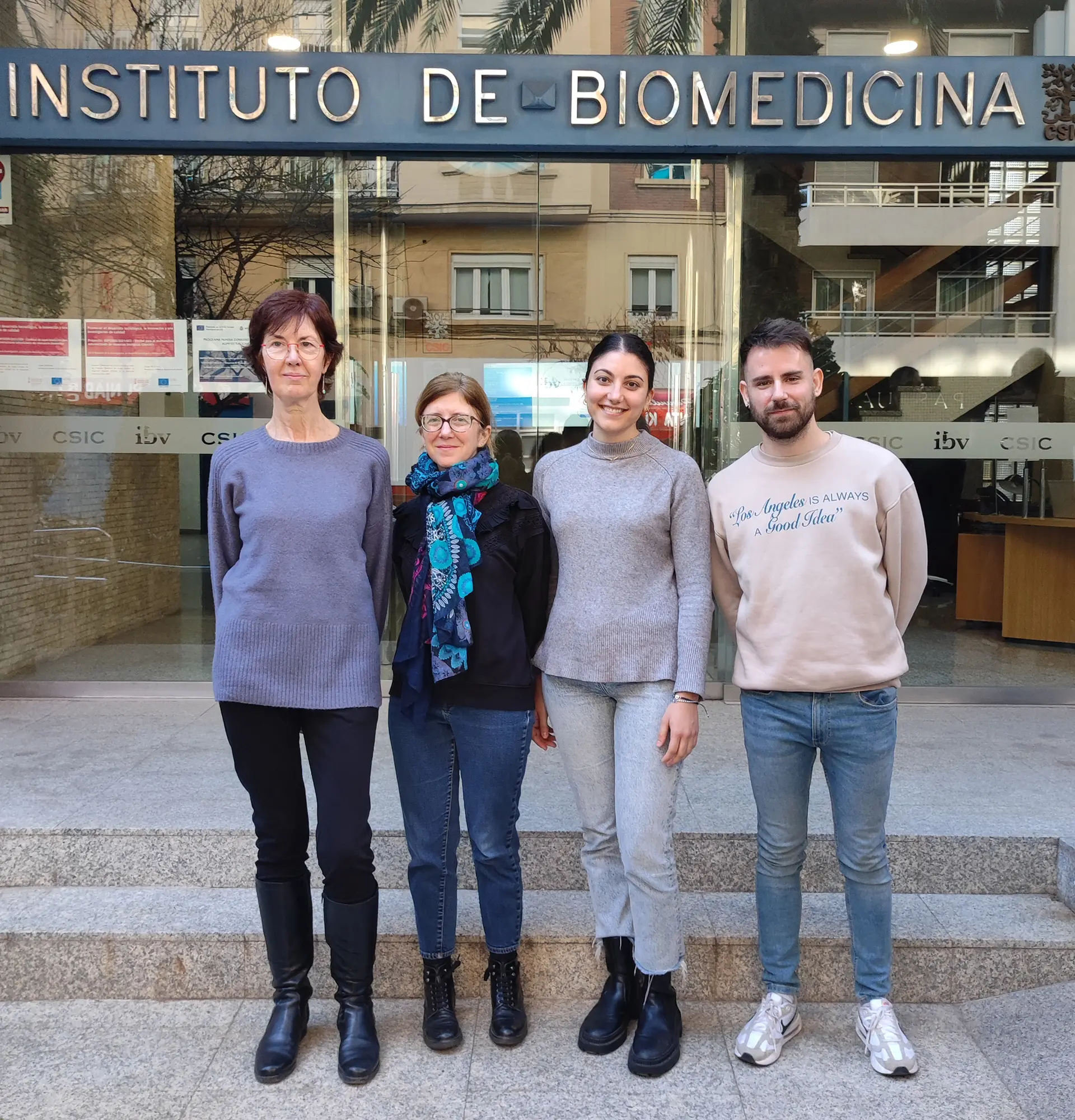Dc. Perez Group
Corticosteroid receptors (GR, MR) and skin biology
Paloma Pérez has a PhD in Biology from the Autonomous University of Madrid. After completing postdoctoral stays at Bristol-Myers Squibb (Princeton, NJ) and CIEMAT (Madrid), she established herresearch group at the Instituto de Biomedicina de Valencia, Spanish National Research Council (IBV-CSIC) in 2002. The group’s line of research focuses on deciphering the molecular mechanisms that mediate the actions of glucocorticoids (GCs) in the pathophysiology of the skin. To do this, we carried out functional studies of two hormonal receptors called GCs receptor (GR) and mineralocorticoid receptor (MR).

About Us
- Principal Investigator:
Paloma Pérez - Doctoral Fellows:
Lisa Sevilla - Predoctoral Fellows:
Andrea Gallego, Omar Pons-Alonso

What Do We Research?
The skin is the largest organ in the body, essential for survival in mammals, as it protects against dehydration, external damage and pathogens. This barrier function resides in the epidermis, the outer epithelial compartment made up mostly of keratinocytes. GCs play an important role in the homeostasis of the epidermis by regulating the transcription of genes involved in cell proliferation, migration, differentiation, and death. Our group has contributed to identify the gene targets of GCs in whole skin and keratinocytes, both in development and in adulthood. Furthermore, we have characterized the cell signaling pathways involved in experimental models of acute and chronic inflammation, non-melanoma skin cancer, and wound healing. These studies may contribute to optimizing therapies based on synthetic GCs, widely used in the treatment of various inflammatory skin conditions, as well as minimizing the adverse actions associated with the chronic use of these compounds.
GCs signal through two closely related intracellular proteins, GR and MR; both are expressed in keratinocytes and can individually or jointly regulate gene expression. Our group has generated animal and cellular models in which GR, MR, or both, have been genetically deleted, specifically in keratinocytes. Our data show that both receptors are essential for development, aging, and skin homeostasis, performing non-redundant functions. The characterization of the respective transgenic models and gene expression analysis show that GR is the central regulator of the cutaneous response to GCs, while MR acts as a modulator. Furthermore, genetic and pharmacological blockade of MR attenuates skin atrophy in animal models and in cultured human skin. These results underline the importance of the GR:MR functional balance and suggest that the combined use of GCs and MR antagonists may be a therapeutic alternative in the treatment of skin diseases.
Currently, we are analyzing the mechanisms of genomic regulation of GR/MR in response to GCs, as well as the selective interactions of these receptors with other relevant proteins in keratinocytes. In addition, we tried to understand the mechanisms involved in the adverse effects of excess GCs -endogenous or pharmacological- on metabolism and immunity, in relation to the high incidence of metabolic alterations in patients with psoriasis and atopic dermatitis. To do this, we investigate the bidirectional relationship between the skin and global homeostasis (inter-organ communication), studying the interactions between keratinocytes and other cell types, including adipocytes and cells of the cutaneous immune system.
Publications
-
Gallego A, Pérez P 2023Molecular Metabolism 74:101763
-
Carceller-Zazo E, Sevilla LM, Pons-Alonso O, Chiner-Oms A, Amazit L, An Vu T, Vitellius G, Viengchareun S, Comas I, Jaszczyszyn Y, Abella M, Alegre-Martí A, Estébanez-Perpiñá E, Lombès M, and Pérez PFASEB J. 2023 Jan;37(1):e22709.
-
Pérez PBr J Pharmacol. 2022 Jul;179(13):3178-3189.
-
Bigas J, Sevilla LM, Pérez PJ Invest Dermatol. 2020 Oct;140(10):1899-1908.
-
Bigas J, Sevilla LM, Carceller E, Boix J, Pérez PCell Death Dis. 2018 May 22;9(6):588.
-
Hannen R, Udeh-Momoh C, Upton J, et al. Pérez P, Philpott MJ Invest Dermatol. 2017 Aug;137(8):1630-1637.
-
Boix J, Sevilla L, Sáez Z, Carceller E, Pérez PJ Invest Dermatol. 2016 Dec;136(12):2417-2426.
-
Sevilla L, Latorre V, Carceller E, Boix J, Vodák D, Mills IG, Pérez PMol Cell Endocrinol. 2015 Sep 5;412:281-9.
-
Latorre V, LM. Sevilla, A Sanchis, Pérez PJ Invest Dermatol. 2013 Dec;133(12):2771-2779.
-
Sevilla LM, V Latorre, A Sanchis, Pérez PJ Invest Dermatol. 2013 Feb;133(2):361-70.



